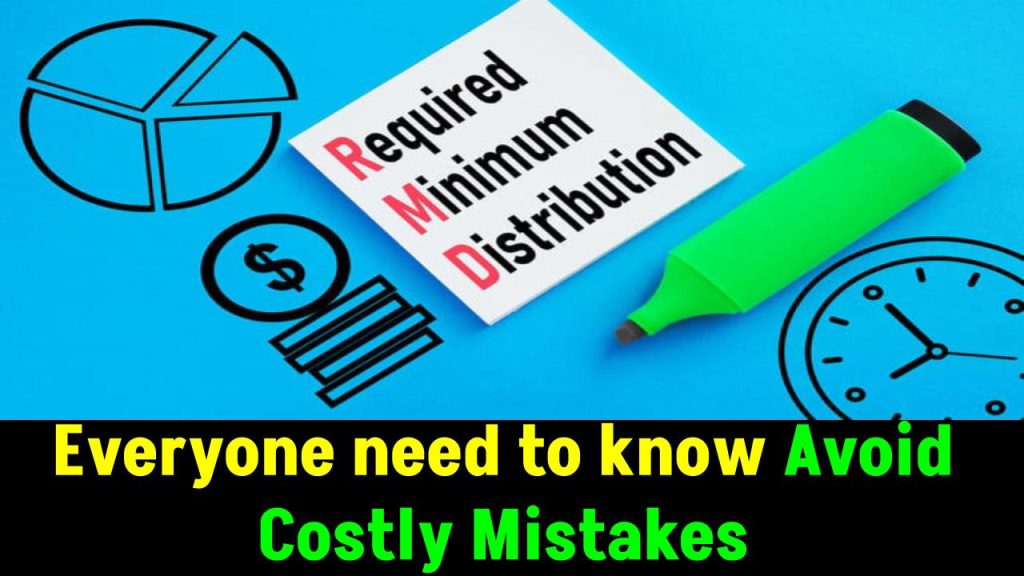
Required Minimum Distributions (RMDs) are a crucial aspect of retirement planning that many retirees overlook. In 2025, understanding how RMDs work is essential to avoid unnecessary penalties and optimize your retirement income.
RMDs are mandatory withdrawals from tax-deferred retirement accounts such as Traditional IRAs, 401(k)s, and 403(b)s once you reach a certain age. These withdrawals are subject to income tax, and failure to take them on time can result in hefty IRS penalties.
This guide will break down the latest RMD rules for 2025, key deadlines, calculation methods, and common mistakes to avoid—all in an easy-to-understand manner.
RMDs in 2025
| Topic | Details |
|---|---|
| RMD Starting Age | 73 (increased from 72 under SECURE 2.0 Act) |
| New Age for Future RMDs | 75 for those born in 1960 or later |
| First RMD Deadline | April 1 of the year after turning 73 |
| Subsequent RMDs Due | December 31 of each year |
| Penalty for Missing RMDs | 25% tax (reduced to 10% if corrected within two years) |
| RMDs for Roth Accounts | Roth IRAs exempt; Roth 401(k) RMDs eliminated from 2024 |
| Qualified Charitable Distribution (QCD) Limit | $100,000 per year (exempt from taxable income) |
| IRS RMD Calculator | IRS.gov |
Navigating Required Minimum Distributions (RMDs) in 2025 is essential to avoid penalties and optimize your retirement strategy. With the new age increase to 73 and potential future changes, it’s crucial to plan ahead and consult a financial advisor.
To stay compliant:
- Know your RMD deadline
- Calculate withdrawals correctly
- Use tax-saving strategies like Roth conversions & QCDs
By staying informed, you can maximize your retirement savings and minimize tax burdens.
Also Check: Garena Free Fire MAX redeem codes for February 12: Get daily diamonds, skins, weapons and more
What’s New for RMDs in 2025?
The SECURE 2.0 Act brought significant changes to RMDs, including:
- Higher RMD Age: If you turned 73 in 2025, your first RMD is due by April 1, 2026.
- Future RMD Age Increase: If you were born in 1960 or later, your RMDs won’t start until age 75.
- Lower Penalty for Missed RMDs: The penalty for not taking an RMD was reduced from 50% to 25% and can drop to 10% if corrected within two years.
- No More RMDs for Roth 401(k)s: Previously, Roth 401(k)s required RMDs, but this rule has been eliminated from 2024 onwards.
How to Calculate Your RMDs in 2025
Your RMD is calculated using the following formula: RMD=Retirement Account Balance on December 31 of Previous YearIRS Life Expectancy Factor\text{RMD} = \frac{\text{Retirement Account Balance on December 31 of Previous Year}}{\text{IRS Life Expectancy Factor}}
For example, if your Traditional IRA had $500,000 on December 31, 2024, and your IRS life expectancy factor is 24.6, your 2025 RMD would be: 500,000÷24.6=20,325500,000 \div 24.6 = 20,325
This means you must withdraw $20,325 by the end of 2025.
Find your IRS Life Expectancy Factor: IRS Table
Common RMDs in 2025 Mistakes and How to Avoid Them
Missing the RMD Deadline
Consequence: A 25% penalty on the RMD amount. If you correct it within two years, the penalty is reduced to 10%.
Solution: Set up automatic withdrawals or reminders for December 31.
Taking the Wrong Amount
Consequence: Taking too little results in the same 25% penalty on the shortfall.
Solution: Use the IRS RMD calculator or consult a financial advisor.
Aggregating Different Account Types Incorrectly
- Traditional IRAs: You can total RMDs and withdraw from any IRA.
- 401(k)s: Each 401(k) account requires its own RMD.
- Roth IRAs: No RMDs required (unless inherited).
Solution: Review account rules and consolidate accounts where possible.
Forgetting About Inherited IRAs
If you inherited an IRA after 2020 (non-spouse), you must empty the account within 10 years.
Solution: Plan withdrawals over time to minimize tax impact.
Strategies to Minimize RMDs in 2025 Taxes
Convert to a Roth IRA Before Age 73
If you’re below RMD age, converting part of your IRA to a Roth IRA reduces future RMDs. Roth conversions incur taxes now but allow tax-free withdrawals later.
Use Qualified Charitable Distributions (QCDs)
Donate up to $100,000 per year from your IRA to a charity—this counts toward your RMD but is not taxable income.
Delay RMDs If Still Working
If you’re still working at 73+ and have a 401(k) with your employer, you can delay RMDs until you retire (unless you own 5% or more of the company).
Reinvest Unneeded RMDs: If you don’t need the RMD for expenses, reinvest it in:
- A taxable brokerage account
- Municipal bonds (tax-free interest)
- Dividend-paying stocks or ETFs
Also Check: HAL Shares Plummet! IAF Chief’s Shocking Statement Sends Investors into Panic! HAL Share Price Today
RMDs in 2025 (FAQ)
What happens if I don’t take my RMD?
The IRS imposes a 25% penalty on the amount you failed to withdraw. If corrected within two years, this is reduced to 10%.
Can I take my RMD from one IRA instead of multiple accounts?
Yes, for Traditional IRAs you can total your RMDs and withdraw from one or more accounts. However, 401(k) RMDs must be taken separately from each plan.
Are Roth IRAs subject to RMDs?
No, Roth IRAs do not require RMDs during the account owner’s lifetime. However, inherited Roth IRAs may require withdrawals.
What if I don’t need my RMD money?
You can:
Donate via QCDs (tax-free)
Reinvest in a brokerage account
Gift to heirs or fund college savings (529 plans)
Can I still contribute to an IRA while taking RMDs?
Yes, you can contribute to a Roth IRA if you have earned income, even while taking RMDs from a Traditional IRA.









